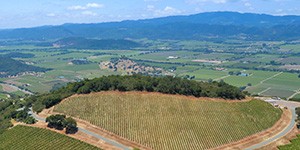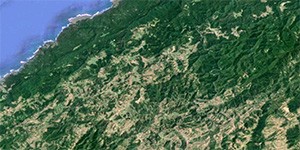
California is home to globally renowned American Viticulture Areas (AVAs) with names like Stag’s Leap, Rutherford, and Oakville evoking ideas of powerful and exciting wines around the world. But beyond the level of AVA there are pockets of wine country that are known only to true connoisseurs. They may be too small to warrant AVA status or their profile may be kept intentionally low to preserve their uniqueness, but these regions are increasingly the source of the most in-demand fruit in California and serve as standard bearers for fine Napa wine around the globe.
Here I highlight a few of these choice areas where it has been my privilege to represent properties. The list is by no means comprehensive. Still I hope it offers a window into the thrilling future of California wines. If you would like to learn more about the larger Napa Valley’s AVAs, the Napa Valley Vintners offer an excellent overview.
Pritchard Hill
 Even in the rarified atmosphere of California’s Napa Valley, some locales transcend typical notions of exclusivity with terroir so unique that wine lovers around the globe line up to sample the wines born in their soil. Pritchard Hill is just such a place, an unassuming hill above the town of St. Helena that produces some of the Napa Valley’s most highly sought-after fruit.
Even in the rarified atmosphere of California’s Napa Valley, some locales transcend typical notions of exclusivity with terroir so unique that wine lovers around the globe line up to sample the wines born in their soil. Pritchard Hill is just such a place, an unassuming hill above the town of St. Helena that produces some of the Napa Valley’s most highly sought-after fruit.
With a mere 340 acres of the hill’s complex yet ideal soil planted to vineyard, there will never be enough grapes from Pritchard Hill to satisfy the demand of the Valley’s discerning wine makers. It is a place where opportunities to purchase land are rarely ever available and thus it is left to those who, privileged by birth or fortune, own the limited acreage of these storied hillsides to craft Pritchard Hill’s prized wines. Dotting the hill like the sparse vineyards, legendary wineries such as Chappellet, Bryant Family, Colgin, and Continuum have built their stellar reputations and cult-like followings on the fruit grown in their Pritchard Hill vineyards.
Top Napa winemaker Philippe Melka has said, “Pritchard Hill provides some of the best sites in all of Napa Valley.” But such quality also has its costs, as land on Pritchard Hill is widely regarded as some of the most expensive to acquire and farm in the entire Napa Valley. Steep slopes and huge underground boulders are just a few of the factors that impede and limit production of Pritchard Hill fruit. Still, with soaring views from cliffs set high above the famed Oakville AVA, with neighbors like Dalle Valle and Screaming Eagle visible on the valley floor below, Pritchard Hill offers some of the most intriguing and beautiful locales for making the wines that will continue to define quality within the Napa Valley.
True Sonoma Coast
 The Sonoma Coast American Viticulture Area stretches across 750 square miles from the northern border at Mendocino along the coast to Marin County encompassing a stunning 500,000 acres that make it the largest AVA in the country. Though the entire purpose of an AVA is to define a growing region that produces a similar quality of wine thanks to its unique geography and climate the political process of their creation can sometimes obscure this essential purpose. Such is the case with Sonoma Coast, with its tremendous size making it fairly useless as a designation of quality or style.
The Sonoma Coast American Viticulture Area stretches across 750 square miles from the northern border at Mendocino along the coast to Marin County encompassing a stunning 500,000 acres that make it the largest AVA in the country. Though the entire purpose of an AVA is to define a growing region that produces a similar quality of wine thanks to its unique geography and climate the political process of their creation can sometimes obscure this essential purpose. Such is the case with Sonoma Coast, with its tremendous size making it fairly useless as a designation of quality or style.
However top producers and connoisseurs understand that within this behemoth there lies the “True Sonoma Coast” or simply, “The True” where ideal conditions produce Chardonnays and Pinot Noirs or subtle and unique character that rival the classics of Burgundy.
The “true” coast is roughly a 6-to-12-mile-wide ribbon along the Pacific shoreline, from the 600-to-1,700-foot hills clustered around the town of Annapolis down to Bodega Bay, where the coastal ridges flatten out into the Petaluma Gap. It can effectively be demarcated into three regions: the northern region around the town of Annapolis off Sea Ranch; the central region with the oldest vineyards on the coast now referred to by some as Fort Ross/Seaview Road; and the southern region near the town of Occidental. The afternoon breeze that comes in every day around noon cools vineyards unobstructed by higher western coastal ridges keeping top temperatures out of the 90’s and, for those in the cool inversion layer below 1,000 feet, out of the 80’s.
The growers and vintners crafting high quality wines in this significantly smaller area look forward to a day when a more genuine AVA can define the boundaries of their unique region, but until then discerning drinkers who wish to experience the “true” Sonoma Coast must seek out these wines on their own.

